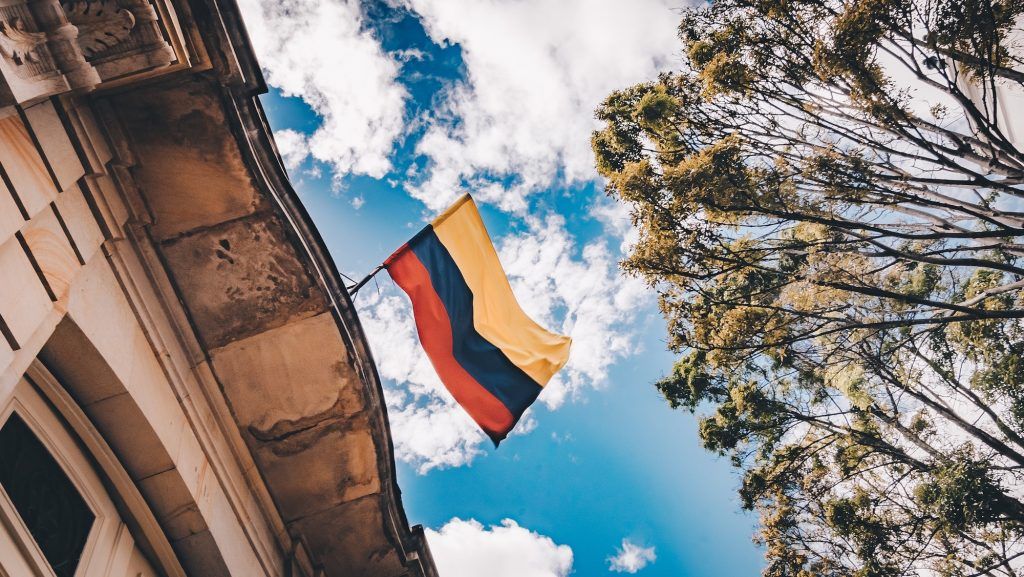South American cuisine is rich and delicious, featuring perfectly cooked meat, mouth-watering pastries, spiced chicken and juicy fruits to finish. No visit to Colombia would be complete without a taste of many of the country’s culinary delights. Visitors to the country will enjoy stunning scenery, beautiful weather, and some of the best food in South America!
Traditional tortilla-based treats
Empanadas are perhaps Latin America’s most famous export, with the wrapped and fried tortillas featuring heaving in Western restaurants purporting to offer Colombian cuisine. Imitation may be the sincerest form of flattery, but we’d challenge travellers to find empanadas as delicious as those found in Colombia, anywhere else. Corn tortillas filled with potato, onion, tomato and ground beef are fried to perfection and served alongside salsa. Variations on the traditional filling include alternating beef for chicken and filling with rice rather than potato.
Arepas are like empty Empanadas, made with larger white or yellow corn tortillas with no filling, fried to perfection. No less delicious, Arepas are toasted and eaten with butter and salt or with cheese, at any time of day. Miniature pastry-like in form, deliciously stuffed with chicken, with or without potato and onion, Pastel de Pollo (chicken pie) makes a delicious snack or scrumptious side. Their crimped edges make them the perfect portable treat to pack in your pocket for an afternoon energy boost.
Chicken Soup and sumptuous street food
Sancocho, or chicken soup, is popular throughout Colombia. A rich and flavoursome broth creates the base for the soup, which often features corn on the cob, plantain and yuca as filling, alongside generous chunks of tender chicken leg or thigh. Served with salsa, the soup will often come with rice, too. Rice, chicken and salsa are, in fact, key components in typical Colombian food, and you’ll find them dished up alongside a whole range of stews, soups and grilled meats.
When sampling the many delicacies on offer in the region, be sure not to miss out on street food sold in the main cities as well as in more rural areas. Cheap, delicious and utilising the freshest of ingredients, street food is a truly authentic way to enjoy a true taste of Colombia. Street food is particularly convenient when backpacking because it is economical and easy to eat with a pack! Amongst the delights on offer are beef and chicken skewers for less than a dollar/pound a piece, perfect for thrifty travellers looking to make every cent count. Grilled and buttered corn on the cob features heavily, as does unripe green mango, a delicious delicacy garnished with lemon juice and salt and providing a sweet and savoury mix to tantalise the taste buds.
Meat and fish feasting
Colombia is renowned for its meat and fish, none more so than ceviche so tender and delicious that it makes other country’s attempts look like a different dish altogether. Locally sourced meat is a particular speciality across the country, with goats, sheep and cows roaming around in most Colombian villages before making their way to your plate. Having roamed freely, beef and lamb is delicious, whilst the goat on offer is tender and smoky, delightful even to those usually hesitant to indulge in the unusual meat.
Regional differences
There are lots of places to eat in Colombia, and each region has variations in preferred cuisines on offer. In the east of Colombia at Los Llanos, extensive cattle rearing means that meat is a popular and well-mastered dish. Ternera a La Llanera, or Mamona, is slow cooked veal roasted gently over a fire, served with plantain and yuca. Off the beaten track, this area of Colombia offers authentic cuisine easily accessible via Villavicencio.
Bogotá is more mainstream for travellers, but that isn’t to say its cuisine is ordinary. Many fantastic restaurants call Bogotá home, including the Criterion restaurant famed across Latin America for mixing Colombian and French cuisine. Ajiaco is a local favourite in Bogotá, a hearty chicken, corn and potato stew that’s delicious after a day of exploring the mountain region. Capers and guasca, a rich Colombian herb, gives the stew a strong flavour.
In the Cartagena area, fish stew made with coconut milk is delicious and tropical, served with avocado, plantain and coconut rice on the side. Seafood is generally popular on the coast, with paella, crab and clams featuring on many menus. Fresh, exotic and delicious ingredients form the base for simple yet striking meals and are the foundation stone to many typical Colombian dishes.
Delicious desserts
Fruit is a staple in Colombia, with fresh and juicy fruits such as cherimoya, mamoncillo and sweet passion fruit rounding off a meal perfectly. Cherimoya, in particular, has an unusual, mixed fruit flavour that tastes different to different people. Less natural indulgences include the delicious Bogotá speciality – Obleas. Two stroopwafel style cookies are joined together using delicious combinations of caramel, jam, chocolate and shredded coconut. Very indulgent!
Food safety and health
Drinking water in Colombia can be hit and miss, so it’s best to stick to bottled water if you’re not sure. Still and sparkling bottled water is generally quite available. Fish and ceviche from street vendors are best avoided as it’s difficult to ensure that it is fresh or, if hot, cooked through. Food is generally safe, however, unless you’re quite unlucky. Avoiding dairy isn’t recommended simply because of the delicious dairy treats on offer, particularly sumptuous desserts featuring whipped cream!
Traveller’s diarrhoea is a common ailment in many destinations, and South America isn’t free from inflicting some upset on its guests, generally unused to the flavour combinations on offer. Drinking bottled water and ensuring food is fresh and/or cooked through are recommended precautionary measures, as is packing a selection of over the counter medication in case you are unlucky. Make sure you get enough fluids if you do fall ill, and be sure to contact a doctor if you lose too much water, as you can quickly become dehydrated in the heat.
